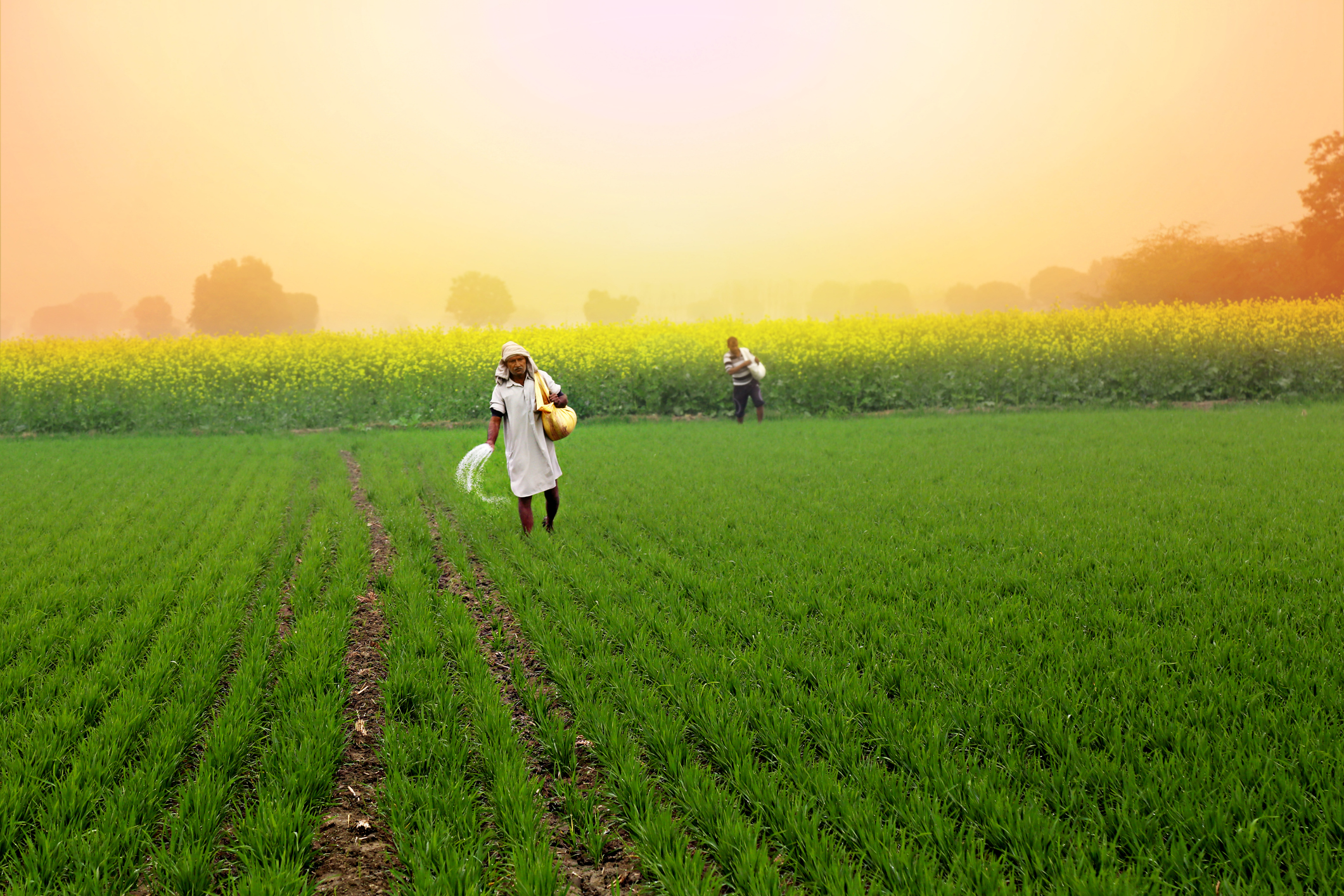India has been an agrarian country since ancient times, and the government continues to emphasise that the foundation of a strong and developed nation lies in empowering and uplifting farmers, the Annadatas. Recognising this, policymakers have consistently prioritised farmers’ welfare and worked on streamlining the “Beej Se Bazaar Tak” (from seed to market) journey. Technology is now playing a pivotal role in this transformation.
The sector is witnessing large-scale integration of Artificial Intelligence (AI), Internet of Things (IoT), Machine Learning (ML), drones, satellite mapping, and the JAM Trinity. These tools are revolutionising farming practices and improving the lives of millions of farmers.
AI and IoT in agriculture
To modernise agriculture and improve farmer welfare, AI and IoT are being widely adopted. They are helping to increase yields, encourage sustainable practices, and address challenges related to weather, pests, and market access.
One such initiative is Kisan e-Mitra, an AI-powered voice-based chatbot developed by the Government of India to answer farmers’ queries in their own languages. It provides information on schemes such as PM-Kisan Samman Nidhi, Kisan Credit Card, and Pradhan Mantri Fasal Bima Yojana in 11 Indian languages. Handling more than 20,000 queries daily, it has already responded to over 95 lakh farmer inquiries.
The National Pest Surveillance System (NPSS), launched on August 15, 2024, uses AI and ML to detect pest attacks and crop diseases early. Farmers and extension workers can upload crop images to the NPSS app or portal for instant analysis and expert advice. Covering 61 crops and identifying over 400 pests, it has issued 10,154 pest management advisories as of March 2025.
AI-powered analytics are also being utilised in satellite-based crop mapping to monitor growth in line with weather patterns, enabling better decision-making. At the same time, the IIT Ropar – Technology and Innovation Foundation is developing IoT-based devices and sensors to enhance saffron cultivation and streamline its supply chain.
Applications of AI and IoT extend to precision farming, climate monitoring, smart greenhouses, livestock tracking, and drone-assisted farming.
Space technology in farming
Space technology is being leveraged to make agriculture more resilient and data-driven. The FASAL (Forecasting Agricultural output using Space, Agro-meteorology and Land-based observations) Project is being implemented by the Mahalanobis National Crop Forecast Centre (MNCFC). Using methodologies developed by ISRO’s Space Applications Centre, the program generates crop forecasts at district, state, and national levels for major crops, including wheat, rice, mustard, sugarcane, jute, rabi sorghum, cotton, soybean, tur, gram, and lentil. Crop maps and acreage statistics are produced, and a crop health factor is now being generated for wheat and paddy.
Geoportals developed with ISRO’s Space Applications Centre provide real-time drought monitoring with updates on rainfall, soil moisture, crop condition, and water storage.
Under the Pradhan Mantri Fasal Bima Yojana (PMFBY), space technology is being used for smart sampling of crop cutting experiments, yield estimation, and dispute resolution related to area and yield.
The Krishi Decision Support System (Krishi-DSS), a cloud-based geospatial platform, integrates satellite images with weather, soil, and water data to guide farmers and policymakers.
Expanding use of drones
Drones are becoming important tools in agriculture for spraying, monitoring, and precision farming. The government is promoting their use through subsidies and schemes.
Under the Sub-Mission on Agricultural Mechanisation (SMAM), financial assistance is provided for the purchase of machines and equipment, including drones. Custom Hiring Centres (CHCs) and Farm Machinery Banks (FMBs) are being established to make machinery available on rental basis.
Specific support for drones includes:
- 100% financial assistance, up to ₹10 lakh per drone, for ICAR institutes, Farm Machinery Training & Testing Institutes, and Krishi Vigyan Kendras.
- Farmers’ Producers Organisations (FPOs) are eligible for grants up to 75% of drone costs for field demonstrations.
- 40% assistance, up to ₹4 lakh, for CHCs under cooperatives, FPOs, and rural entrepreneurs.
- 50% assistance, up to ₹5 lakh, for agriculture graduates establishing CHCs.
- 50% assistance, up to ₹5 lakh, for small and marginal farmers, SC/ST farmers, women farmers, and farmers from North Eastern states.
- 40% assistance, up to ₹4 lakh, for other farmers.
The Namo Drone Didi Scheme, approved with an outlay of ₹1,261 crore for 2023–24 to 2025–26, aims to provide 15,000 drones to Women Self Help Groups (SHGs). The scheme covers 80% of the cost of drone packages, up to ₹8 lakh, enabling SHGs to become drone service providers while improving crop efficiency and reducing costs.
Under the SVAMITVA scheme, drones are being used for land mapping to help villagers obtain legal ownership documents. As of July 2025, drone surveys had been completed in 3.23 lakh villages. This helps reduce disputes and improve access to loans.
JAM Trinity for direct support
The Jan Dhan–Aadhaar–Mobile (JAM) Trinity is ensuring transparent, leak-proof subsidy transfers directly into farmers’ bank accounts. By eliminating middlemen, it has improved efficiency and empowered farmers economically.
On 2 August 2025, Prime Minister Narendra Modi released the 20th instalment of PM-Kisan, transferring ₹20,500 crore directly into the bank accounts of 9.7 crore farmers.
Towards digital agriculture
The government continues to expand digital and technological initiatives through missions such as the Digital Agriculture Mission and e-NAM (National Agricultural Market). The aim is to simplify the farmer’s journey from seed to market and build a more self-reliant, efficient agricultural sector.
Technology is no longer a distant concept for Indian farmers. It is increasingly becoming an everyday tool in the fields, empowering Annadatas and supporting the nation’s progress.














